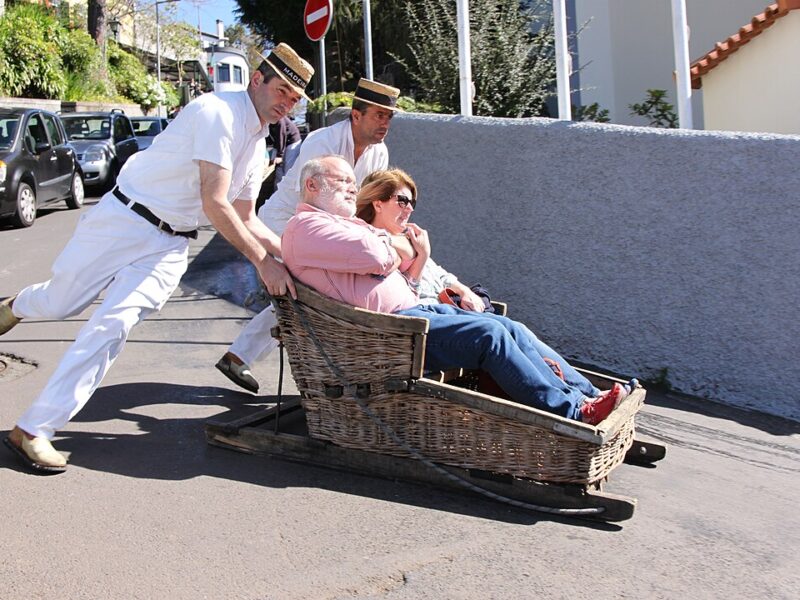A new and spectacular museum in the western Canadian city of Winnipeg teaches visitors about Canada’s own connections to the Holocaust and how the decisions we make today can have an impact on the human rights of others.
“Six million did not just happen out of the blue,” said Dr. Jeremy Maron, the curator of the Holocaust gallery of the Canadian Museum for Human Rights. “It required a lot of individual actions and a lot of individual choices. We want our visitors to reflect on how their own actions and their own choices might contribute towards human rights, either in positive or negative ways.”
Opening its doors in 2015, the CMHR is an audacious structure of glass and steel that was the vision of one of the city’s greatest Jewish philanthropists, the late Israel Asper. He wondered why children from Winnipeg, a city with a sizeable Jewish community, and other Canadian cities had to leave the country to visit museums in the United States or Israel to learn about the Holocaust and was inspired to create a similar institution closer to home.
The idea quickly morphed from a Holocaust-specific museum into one about human rights as viewed through a Canadian lens. While Canada has an outstanding human rights record today, it’s not perfect and has plenty of dark stories of its own, including the treatment of its aboriginal people and how it interred foreign populations during both world wars. These and many other human rights themes are presented to visitors in interactive galleries that challenge them to question their own beliefs about how they think they and others should be treated.
The museum is one of only two Canadian national museums outside of the country’s capital of Ottawa, and the only one in Western Canada. Its Holocaust gallery features several fascinating artifacts that are connected to the personal stories of people who were caught up in the Nazi genocide.
”Presentation of first-hand experience is very important,” said Maron. “It can really root this historical atrocity that is something so big that it becomes abstract, Hearing a first-hand story can personalize it and make it real in some sense.”
“We try to bring individual stories to the forefront for visitors to make those individual connections and see some of the faces behind these mass numbers. Each of those six million is a particular individual who has a particular experience with a particular impact that happened to them and their families.”
One of the artifacts that Maron likes to highlight is a Yiddish poem that was probably written in the Radom ghetto in Poland on January 13, 1943, the date of one of the mass deportations from the ghetto to the death camps.
“It was donated to us by the poet’s son who found it in his family’s belongings long after the death of this father. The poem describes the conditions and the despair of the ghetto, but it also contains this sense of oblique hope for the continuation of the Jewish people, either in this world or the next.”
Maron also talks about the moving story of Sigi Wassermann who lost his parents in Auschwitz. He is a local survivor whose experience are told in the museum of being a child sent to Great Britain on the Kindertransport after Kristallnacht in 1938 before finally settling in Canada.
But possibly the most emotional story of all is that of the SS St. Louis, a passenger ship filled with Jews that the Nazis let sail before the outbreak of the war. The ship attempted to land in Cuba, but was refused entry, then was turned away from the United States and Canada before returning to Europe. Most of those who returned would later perish when the Nazis occupied its neighbours, although the lucky few who made it to Great Britain would survive.
Maron says there are some analogies to refugees fleeing today to Europe and North America from places like Syria and the museum’s Holocaust stories make visitors think about parallels in the world today.
“They were granted a means to leave safely that is different from a lot of refugees today whose very mode of fleeing is extremely dangerous right now, but what is the same is the lack of will of some countries to actually allow these refugees to dock and enter so the borders that were closed previously, remained closed.”
Making connections with the past and the present is something that the CMHR does well. One of the the themes that it examines in the Holocaust gallery is the abuse of state power and how the Nazis wielded it.
“The Nazis used the instruments of power to very quickly implement their racial and totalitarian policies. If a user is looking at this gallery, they are learning about that history in the context of Nazi Germany and the growth of the Nazi party in the 1920s that came to power in the 1930s. if they are doing this as part of the museum journey more broadly, they may very well pick up other connections to the theme of state power that they may recognize either elsewhere in the museum journey or make connections in their own mind about similar themes that they are thinking about.”
While some people think that the story of the Holocaust is complete, Maron thinks it will be a long time before we completely comprehend it, if ever, and galleries like the one he curates will always be changing to reflect new knowledge.
“I think more will be revealed in years to come because there are so many micro-histories. Whenever I go to a Holocaust conference, I’m always shocked that there will be a panel or papers on a particular aspect I had never thought about,” he said. “There’s always going to be more that we don’t know and that we’re uncovering, maybe some surprising links that we’ve never uncovered either through archives opening up or new discoveries by researchers. It might slow down a little bit once we no longer have first-hand voices, but I think it will always continue.”
Canadian Museum for Human Rights
https://humanrights.ca/

